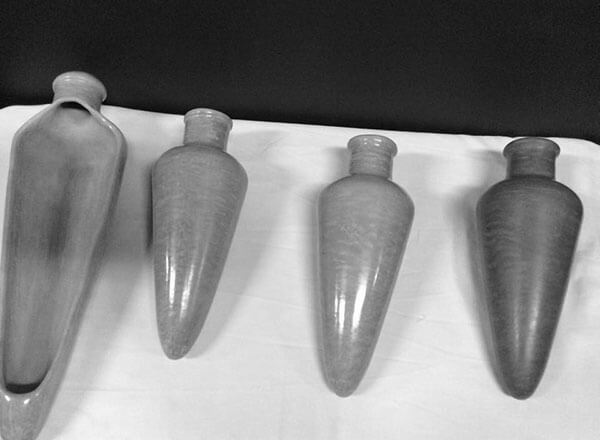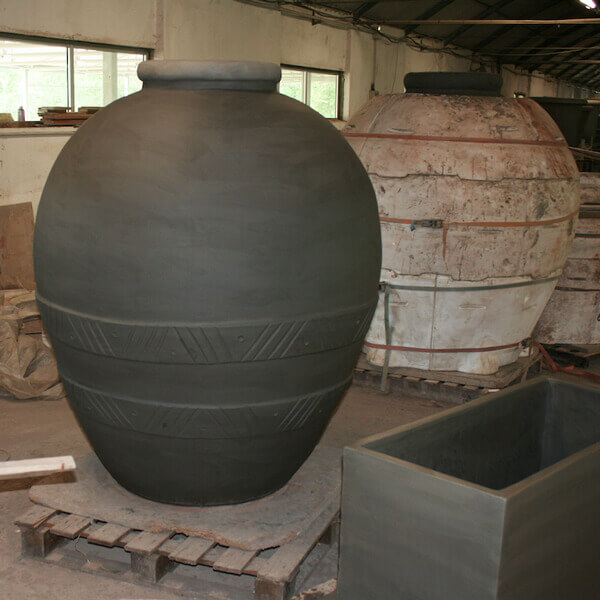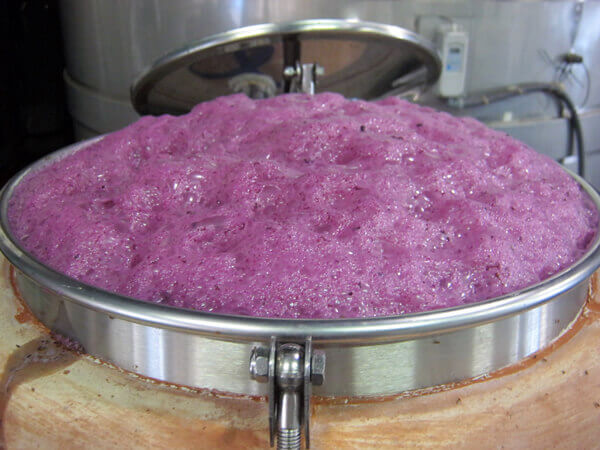Q. What the heck is an “amphora”?
A. An amphora is a clay vessel used to ferment, store and transport wine. The name is Greek, and comes to us from the Romans. Amphorae were the de facto storage and shipping containers of the ancient world, and in addition to wine, they held olive oil, grain, fish and other commodities. Their typical tapered shape allowed them to be packed tightly in ship-holds, and then tied down by the neck and handles. Amphorae were everywhere in the Greco-Roman world, and because each region produced a distinctive design, archaeologists have discovered a lot about ancient trade routes through shards and intact amphorae found in excavations and shipwrecks. Incredibly, there is a large hill in contemporary Rome (Monte Testaccio) which is composed almost entirely of shards of discarded amphorae from the ancient city. Amphora is currently the proud owner of eight amphorae (ranging in size from 750L to 1000L) imported from Italy which are used to both ferment and age some of our Rhone, Spanish and Italian varietals.
Q. Why are there several wineries clustered around Amphora?
A. Amphora is located at Timber Crest Farms, which was a dried-fruit production facility until about 2004. Timber Crest’s most notable product was “Sonoma” brand dried tomatoes, but they produced a big line of great quality fruits right here (we really miss their dried apricots!). The owners sold the brands and label, but continue to reside on the property and farm their vineyard (as they have since the early ’50s!!). Around 2005, they began to lease out their production facilities to wineries. Amphora occupies a former cold-storage building, and was the second winery to arrive on “the plateau”. This above-ground “cave” is perfect for aging wine. In addition to five independent wineries, Timber Crest is also landlord to a sauce/condiment manufacturer, a vine/budwood company, and a co-op tasting room.
Q. What’s the difference between Syrah and Petite Sirah?
They are two distinct grape varietals, but they are also about as closely related as two different varietals can be. Syrah is the grand old “noble” varietal of the northern Rhone valley in France, and Petite Sirah is its love-child with another Rhone varietal called Peloursin. Petite Sirah was bred around 1880 by a nurseryman in the south of France named Durif, and that is also what the new varietal was usually called as well. When Durif (the grape) arrived in California about 1884, some growers referred to it as “Petite Sirah”, and the name stuck! To further complicate all this name business, the Australians refer to Syrah as Shiraz!



